Today we are once again talking about a Swiss watch and movement manufacturer that can claim a hundred years of history and yet has remained almost unknown. We are talking about Goschler & Cie from Biel in Switzerland.

From advertisements we know that the company Frères Goschler or a predecessor of it was founded as early as 1830.
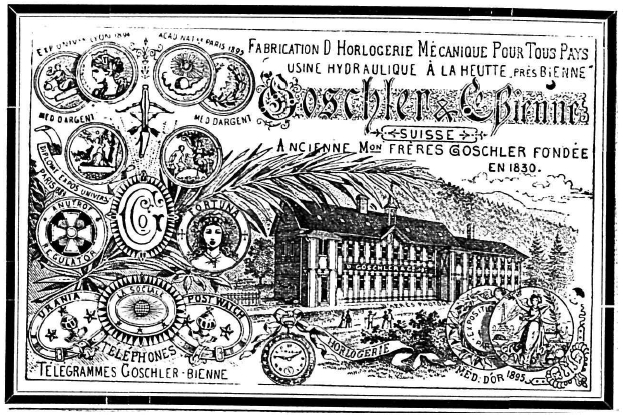
The first 50 years of the company’s history unfortunately remain in the dark, at least I could not find any information about it. The first reference is found in 1883 in the Swiss Official Gazette of Commerce (SOGC):

We learn that at that time the company was called Frères Goschler, had already existed for some time and Marc Goschler from Auxonne in France was its owner. The company was therefore perhaps not founded in Switzerland, but in France. From advertisements of the 1930s it can be seen that the company was located in Biel since 1857. And why there was only one owner, although the company name contains Frères = brothers, also remains open.
From another entry in the SOGC of 1885 it can be concluded that Marc Goschler died. His widow, Carolina Goschler, and René Blum-Goschler, possibly a son-in-law, then continued the company under the name Goschler & Cie:
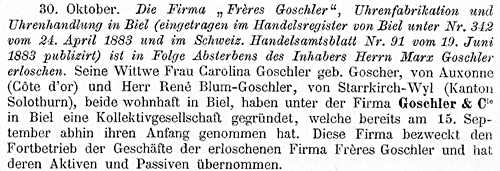
The first indication that Goschler also manufactured movements himself is also found in the SOGC, namely in 1887 when the following trademark was registered:
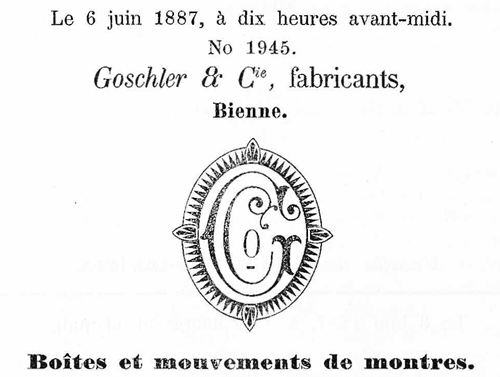
It says that the company manufactures watch cases (boîtes) and movements (mouvements).
Between 1892 and 1897, Goschler also obtained a number of patents, including the Swiss patent CH11256 entitled Quantième pour montres système Roskopf (Calendar for Roskopf watches).
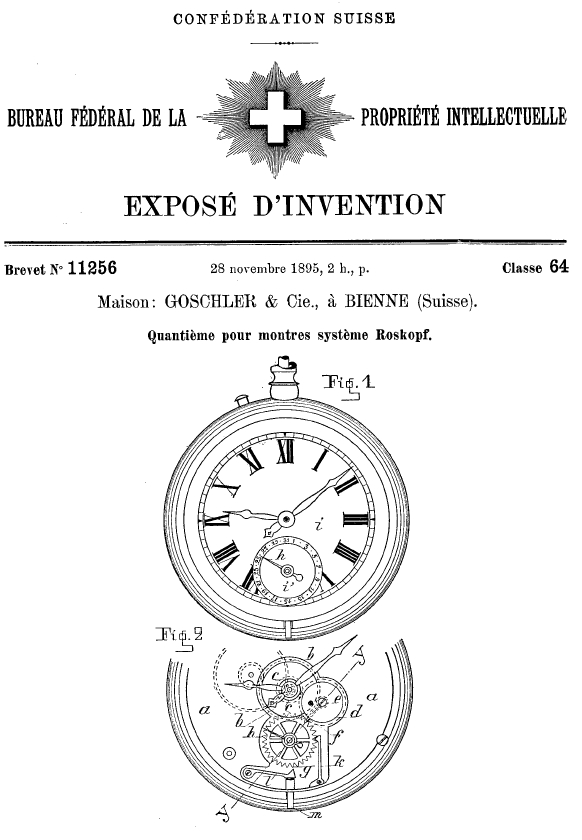
In 1897, Goschler established a branch in La Heutte near Biel in the factory of the deceased watchmaker Berthold Amann, whose business Goschler had taken over two years earlier. In 1903, the company was then renamed Urania Watch Co, Goschler & Cie. He had already taken over the Urania brand from Amann in 1895.

By the way, there are a number of other watch manufacturers who used the brand name Urania, e.g. the Deutsche Präzisionsuhrenfabrik Urania in Munich. They all had nothing to do with Goschler!


Also in 1903, Goschler registered 14 movements as models in the Swiss Official Gazette of Commerce. The model numbers are not official caliber designations, but were only used for registration!
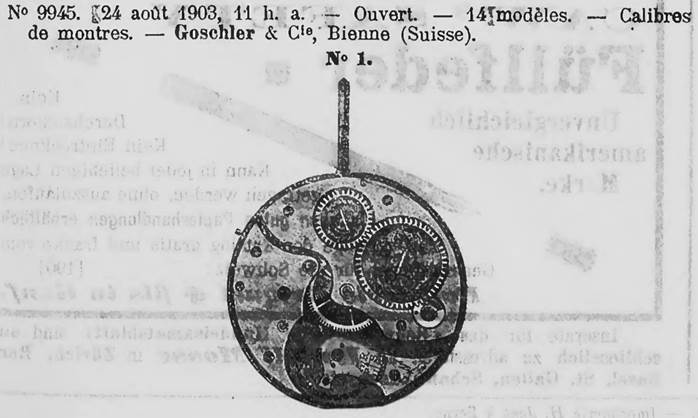

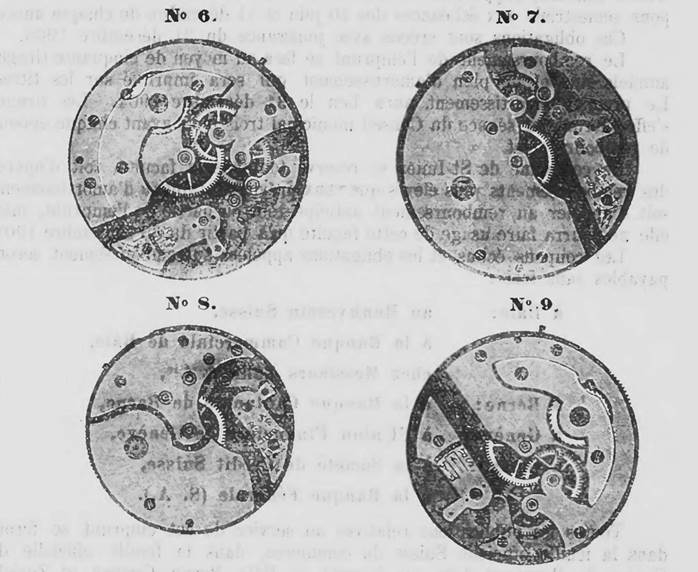
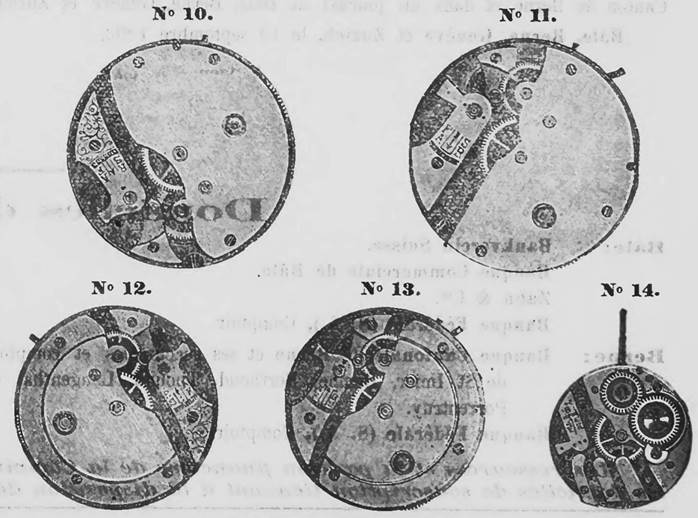
I can also present a few of these movements here in the original:
Goschler/Urania Model No. 2
Unfortunately, only a view of the bridge side! Swiss lever escapement, 15 jewels, crown winding, small second. Hallmarked with the La Heutte mark.
Lépine (open face) movement. The movement is also available in a Savonnette (hunter) version as model no. 1.
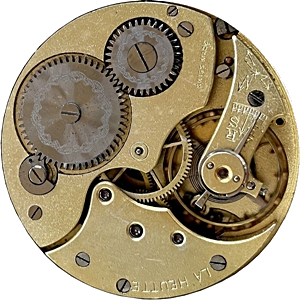
Goschler/Urania Model No. 6
Swiss lever escapement with bimetallic screw balance, 19´´´ lignes diameter, 15 jewels, crown winding with pusher, small second. Hallmarked with the URANIA mark.
Lépine (open face) movement. The movement is also available in a Savonnette (hunter) version as model no. 4.
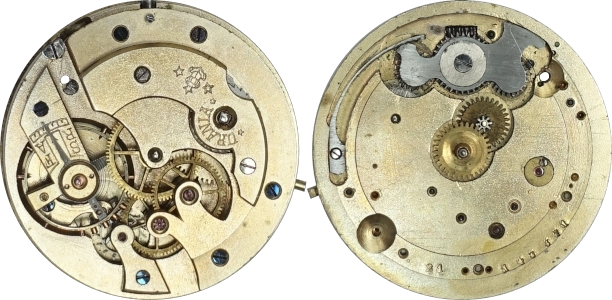
Goschler/Urania Model No. 10
Cylinder escapement, 18” lignes diameter, 8 jewels, crown winding with pusher, click on the dial side, small second. Hallmarked with the mark URANIA. This movement is relatively common, also with the FORTUNA mark, which belongs to Goschler as well.
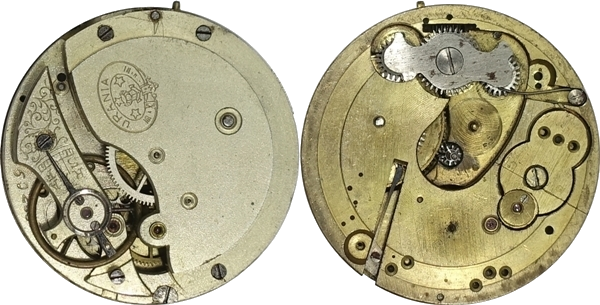
Goschler/Urania Model No. 11
Cylinder escapement, 18´´´ lignes diameter, 6 jewels, crown winding with lever, click on the dial side, small second. Hallmarked with URANIA mark. Savonnette (hunter) movement.

So much for Goschler movements, let’s continue with the history of the company.
The year is 1916, in the middle of the First World War. The German magazine Die Uhrmacherkunst reports that as of April 1, a number of Swiss watch manufacturers are banned because they have been identified as suppliers of munitions to enemy armies. From that date, German companies were no longer allowed to have business relations with the manufacturers on the blacklist. This affected not only Goschler’s Urania Watch but also other companies such as Tavannes Watch, Movado and Zenith.

Unfortunately, I could find out little about how the company continued after the First World War. In 1930, the Swiss Official Gazette of Commerce (SOGC) announced that the company had been liquidated after the death of Karolina Goschler. The liquidation was carried out by René Blum-Goschler and Charles Bigard, who also placed corresponding sale advertisements:
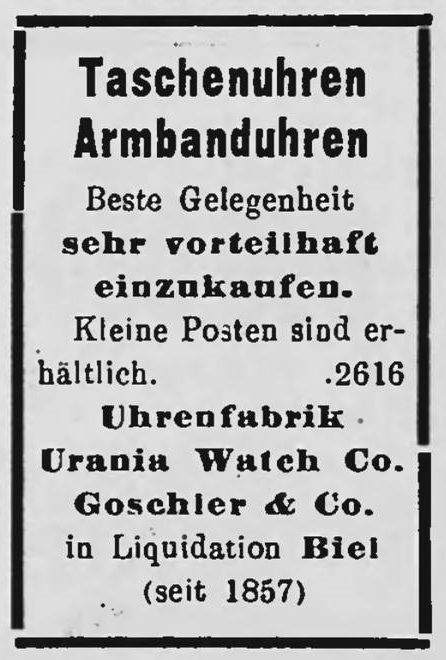
It was not until much later, in 1938, that the SOGC announced the final deletion of the company from the commercial register:

Finally, for the sake of completeness, a list of the numerous brands that Goschler had reserved for himself over time:

- Anutrof Regulator
- C&W
- Colon
- Delta
- Fortuna
- GCo
- Grenett
- Hardie VD
- Hora Fija
- Ilixum
- Interne
- La Celebre
- La Heutte Watch
- La Sociale
- Le Duc
- Palme
- Post Watch
- Progreso
- The Cape Central
- The Conqueror
- The Imperial
- The New Waterside
- The V.R.A. Lever
- The Waterside
- Urania
- Uranium
- UWCo
- W&C

Very interesting reading.
I happen to own a solid silver 1918 wrist watch from Urania/Goschler. Works well and keeps time. Runs about 28/30 hours before rewinding.